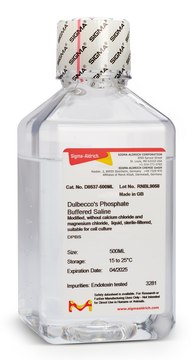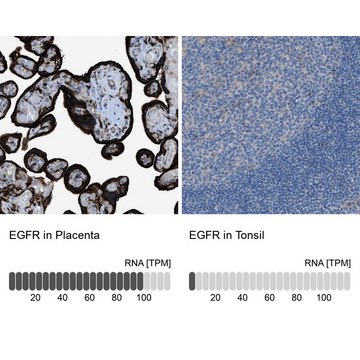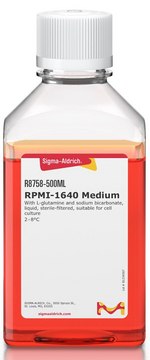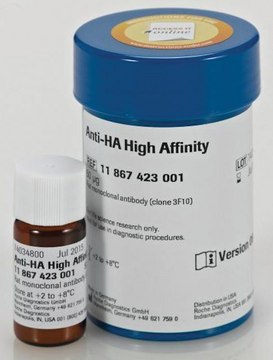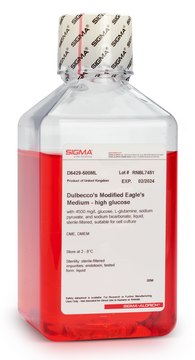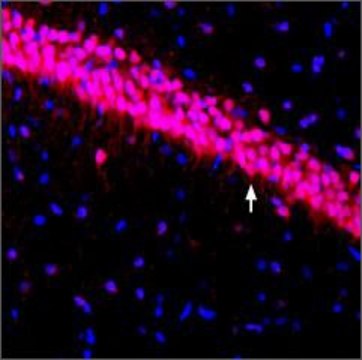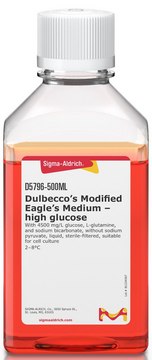06-719
Anti-LexA Antibody, DNA-binding region
Upstate®, from rabbit
Sign Into View Organizational & Contract Pricing
All Photos(3)
UNSPSC Code:
12352203
eCl@ss:
32160702
NACRES:
NA.41
Recommended Products
biological source
rabbit
Quality Level
antibody form
purified immunoglobulin
antibody product type
primary antibodies
clone
polyclonal
species reactivity
E. coli
manufacturer/tradename
Upstate®
technique(s)
immunoprecipitation (IP): suitable
western blot: suitable
isotype
IgG
NCBI accession no.
UniProt accession no.
shipped in
wet ice
target post-translational modification
unmodified
Gene Information
Escherichia coli K12 ... Lexa(948544)
General description
The anti-LexA Antibody allows detection of LexA protein and recombinant proteins fused to the LexA protein. This antibody can be used to detect expression of potential bait proteins constructed for use with the yeast two-hybrid system or other interaction trap systems. LexA adds about 22 to 25 kDa to your protein, depending on the number of extra amino acids.
Specificity
Recognizes LexA portion of bait fusion proteins used in the yeast two-hybrid system.
Immunogen
His-tagged DNA binding domain of LexA protein corresponding to amino acid residues 1-202
Application
Detect LexA with Anti-LexA Antibody, DNA-binding region (Rabbit Polyclonal Antibody), that has been shown to work in IP & WB.
Quality
routinely evaluated by immunoblot on LexA-pRB transfected yeast lysate
Target description
24 kDa
Physical form
Format: Purified
Analysis Note
Control
LexA-pRB transfected yeast cell extract
LexA-pRB transfected yeast cell extract
Legal Information
UPSTATE is a registered trademark of Merck KGaA, Darmstadt, Germany
WGK
WGK 1
Flash Point(F)
Not applicable
Flash Point(C)
Not applicable
Certificates of Analysis (COA)
Search for Certificates of Analysis (COA) by entering the products Lot/Batch Number. Lot and Batch Numbers can be found on a product’s label following the words ‘Lot’ or ‘Batch’.
Already Own This Product?
Find documentation for the products that you have recently purchased in the Document Library.
Yu-Fan Chen et al.
Molecular and cellular biology, 36(15), 2039-2050 (2016-05-18)
Cohesin associates with distinct sites on chromosomes to mediate sister chromatid cohesion. Single cohesin complexes are thought to bind by encircling both sister chromatids in a topological embrace. Transcriptionally repressed chromosomal domains in the yeast Saccharomyces cerevisiae represent specialized sites
Notch signaling is antagonized by SAO-1, a novel GYF-domain protein that interacts with the E3 ubiquitin ligase SEL-10 in Caenorhabditis elegans.
Hale, VA; Guiney, EL; Goldberg, LY; Haduong, JH; Kwartler, CS; Scangos, KW; Goutte, C
Genetics null
The SOS regulatory system of Escherichia coli.
Little, J W and Mount, D W
Cell, 29, 11-22 (1982)
Tyrosine residues direct the ubiquitination and degradation of the NY-1 hantavirus G1 cytoplasmic tail.
Erika Geimonen, Imelyn Fernandez, Irina N Gavrilovskaya, Erich R Mackow
Journal of virology null
Seiji Tanaka
Genes to cells : devoted to molecular & cellular mechanisms, 24(12), 781-788 (2019-10-11)
Protein-protein interactions are one of the most basic and critical processes underlying biological functions. Thus, identification of the interacting proteins of a protein of interest and further elucidation of the roles of the interactions is critical for understanding the related
Our team of scientists has experience in all areas of research including Life Science, Material Science, Chemical Synthesis, Chromatography, Analytical and many others.
Contact Technical Service
